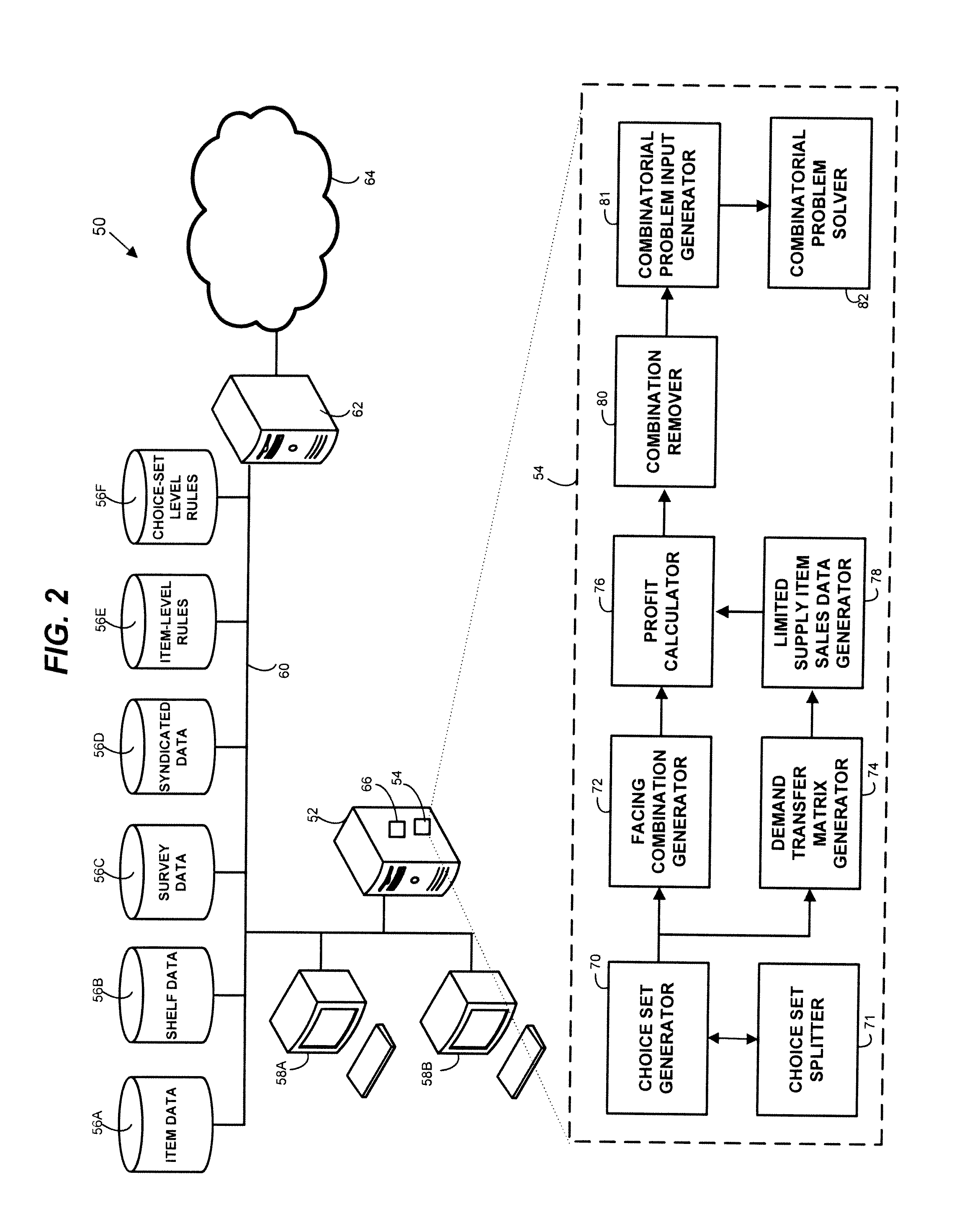Method and System for Optimizing Store Space and Item Layout
a technology for optimizing store space and item layout, applied in the field of optimizing store space, can solve the problems of difficult planogram development, limited shelf or floor space, and difficult to develop a planogram for tens or hundreds of items
- Summary
- Abstract
- Description
- Claims
- Application Information
AI Technical Summary
Benefits of technology
Problems solved by technology
Method used
Image
Examples
Embodiment Construction
[0047]FIG. 1 illustrates a certain arrangement of items on a longer shelf 12 and two shorter shelves 14 and 16 in a retail area 10. In general, the retail area 10 may include any number of merchandizing fixtures (e.g., shelves, racks, gridwall panels) of the same or different width, and the items may be any types of products packaged in any desired manner. By way of example, however. FIG. 1 depicts several baby care items packaged in rectangular boxes or round (tubular) containers. In particular, several small containers 20A and several large containers 20B may contain baby powder, boxes 22A and 22B may contain two respective brands of baby wipes, boxes 24A-C may contain diapers for different ages of one or several brands, and cartons 26A-C may contain infant formula from several manufacturers. The containers 20A-B and boxes 22A-B are placed on the upper shelf 12 in this example configuration, boxes 24A-C are on the second shelf 14, and the 26A-C are on the bottom shelf 16. The uppe...
PUM
 Login to View More
Login to View More Abstract
Description
Claims
Application Information
 Login to View More
Login to View More - R&D
- Intellectual Property
- Life Sciences
- Materials
- Tech Scout
- Unparalleled Data Quality
- Higher Quality Content
- 60% Fewer Hallucinations
Browse by: Latest US Patents, China's latest patents, Technical Efficacy Thesaurus, Application Domain, Technology Topic, Popular Technical Reports.
© 2025 PatSnap. All rights reserved.Legal|Privacy policy|Modern Slavery Act Transparency Statement|Sitemap|About US| Contact US: help@patsnap.com



